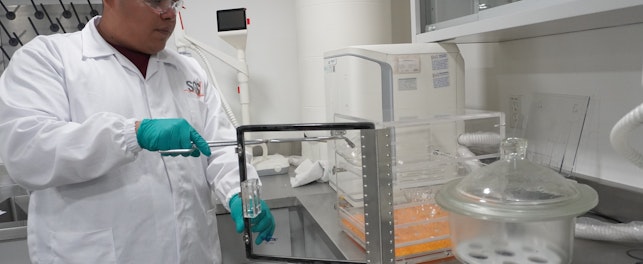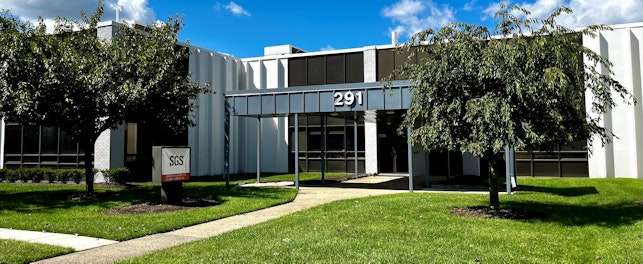Consumer CompactJanuary 22, 2020
Global Plastic Action Plan (GPAP) estimates 8 million tonnes of plastic leak into our oceans every year and that by 2050 there will be more plastic than fish in our seas.i We are all aware of the issues surrounding single-use plastic food contact products such as water bottles, straws, cutlery, etc., but perhaps a less well-known source of single-use plastic is the teabag.
Tea is the second most consumed beverage in the world, after water. In 2013, it was estimated 234 billion liters of tea were consumed, rising to 281 billion liters in 2019, and the trend is continuing.ii
Most tea is consumed in leaf form, but several markets rely on the teabag. For example, 96% of UK tea is bagged. The teabag is also the primary method for launching hot tea products onto new markets. In 2017, 87% of tea launches in North America were in the bagged format, 75% in Europe, and 45% in Asia-Pacific.iii While the teabag may be unadventurous to some people, its convenience means it is here to stay.
In the UK, it is estimated around 60.2 billion cups of tea are consumed each year. The vast majority are made using teabags. It is also estimated that 96% of teabags used in the UK contain non-biodegradable polypropylene. If not incinerated after disposal, but instead collected as organic waste or put into landfill, then a large amount of polypropylene is being released into the environment.iv
Single-use plastics are a serious threat to the environment. Around the world, polypropylene has been targeted in many places, to reduce its use. For example, the EU’s ‘Single-Use Plastics Directive’, (EU) 2019/904, is already addressing the use of plastics in food contact materials such as cutlery, plates, straws, etc., and the ban will begin in 2021.v In the US, however, a national ban does not exist but multiple local jurisdictions have introduced bans.vi Manufacturers and brands need to be certain their products comply with the right requirements for their market.
Alternatives to polypropylene do exist but there can be difficulties. Some brands claim their teabags are ‘plastic-free’ because they use polylactic acid (PLA) – a bio-plastic made from plant materials instead of oil. However, many experts, and Directive (EU) 2019/904, would consider these to also be single-use plastics.vii
Major brands are trying to find alternatives but initial efforts have shown that constructing a biodegradable teabag is difficult, with early attempt falling apart in consumer’s cups.viii One manufacturer is now working with Sheffield University to design a teabag that won’t be classed as ‘plastic-free’, but ‘industrially compostable’. This means they could be put in food and garden waste for recycling but would not break down in a domestic compost heap as the temperature doesn’t get high enough.ix
There are two other options. One is to use leaf tea and the second is to stitch the bags together using cotton thread.
SGS offers a range of services to help manufacturers of food contact materials comply with market regulations and consumer expectations. These services can include the determination of polymer types in used materials, food safety tests, and testing whether materials are bio-degradable/compostable. As regulations change and consumers demand more environmentally friendly products, we can help you ensure your products remain compliant and viable in the marketplace.
ii Annual tea consumption worldwide from 2013 to 2021
iii Tea Bags: Staid and Stable
iv Do tea bags contain plastic?
v Single-use plastics ban approved by European Parliament
vi See the complicated landscape of plastic bans in the U.S.
vii The reduction of the impact of certain plastic products on the environment
viii Yorkshire Tea apology after biodegradable tea bags fall apart
ix Top Tea Brands Found To Contain Microplastics, Poses Serious Threat
Most tea is consumed in leaf form, but several markets rely on the teabag. For example, 96% of UK tea is bagged. The teabag is also the primary method for launching hot tea products onto new markets. In 2017, 87% of tea launches in North America were in the bagged format, 75% in Europe, and 45% in Asia-Pacific.iii While the teabag may be unadventurous to some people, its convenience means it is here to stay.
Environmental Damage
Teabags are, however, environmentally damaging. They often contain a small amount of non-biodegradable polypropylene to seal the bag. In some cases, excluding the tea, plastic accounts for roughly 25% of the teabag. Cumulatively, this adds up to an enormous amount of single-use plastic going into the environment.In the UK, it is estimated around 60.2 billion cups of tea are consumed each year. The vast majority are made using teabags. It is also estimated that 96% of teabags used in the UK contain non-biodegradable polypropylene. If not incinerated after disposal, but instead collected as organic waste or put into landfill, then a large amount of polypropylene is being released into the environment.iv
Single-use plastics are a serious threat to the environment. Around the world, polypropylene has been targeted in many places, to reduce its use. For example, the EU’s ‘Single-Use Plastics Directive’, (EU) 2019/904, is already addressing the use of plastics in food contact materials such as cutlery, plates, straws, etc., and the ban will begin in 2021.v In the US, however, a national ban does not exist but multiple local jurisdictions have introduced bans.vi Manufacturers and brands need to be certain their products comply with the right requirements for their market.
Alternatives to polypropylene do exist but there can be difficulties. Some brands claim their teabags are ‘plastic-free’ because they use polylactic acid (PLA) – a bio-plastic made from plant materials instead of oil. However, many experts, and Directive (EU) 2019/904, would consider these to also be single-use plastics.vii
Major brands are trying to find alternatives but initial efforts have shown that constructing a biodegradable teabag is difficult, with early attempt falling apart in consumer’s cups.viii One manufacturer is now working with Sheffield University to design a teabag that won’t be classed as ‘plastic-free’, but ‘industrially compostable’. This means they could be put in food and garden waste for recycling but would not break down in a domestic compost heap as the temperature doesn’t get high enough.ix
There are two other options. One is to use leaf tea and the second is to stitch the bags together using cotton thread.
Looking to The Future
It is probable that as regulators and consumers become more aware of the negative effects of single-use plastics, they will begin demanding more environmentally friendly teabags in the same way they now demand better straws and beverage containers, etc. Manufacturers are already seeing the advantages of being able to advertise their products as ‘plastic-free’, even if they mean free from oil-based plastics. As the problems of plastic become more visible, it can be assumed ‘plastic-free’ will become an important factor for teabag users.SGS offers a range of services to help manufacturers of food contact materials comply with market regulations and consumer expectations. These services can include the determination of polymer types in used materials, food safety tests, and testing whether materials are bio-degradable/compostable. As regulations change and consumers demand more environmentally friendly products, we can help you ensure your products remain compliant and viable in the marketplace.
For more information, please contact:
Udo Krischke
Global Technical Manager RSTS & Operational Integrity Manager
Phone: +49 6128 744 235
REFERENCES:
i A world without plastic waste and pollution is possibleii Annual tea consumption worldwide from 2013 to 2021
iii Tea Bags: Staid and Stable
iv Do tea bags contain plastic?
v Single-use plastics ban approved by European Parliament
vi See the complicated landscape of plastic bans in the U.S.
vii The reduction of the impact of certain plastic products on the environment
viii Yorkshire Tea apology after biodegradable tea bags fall apart
ix Top Tea Brands Found To Contain Microplastics, Poses Serious Threat



